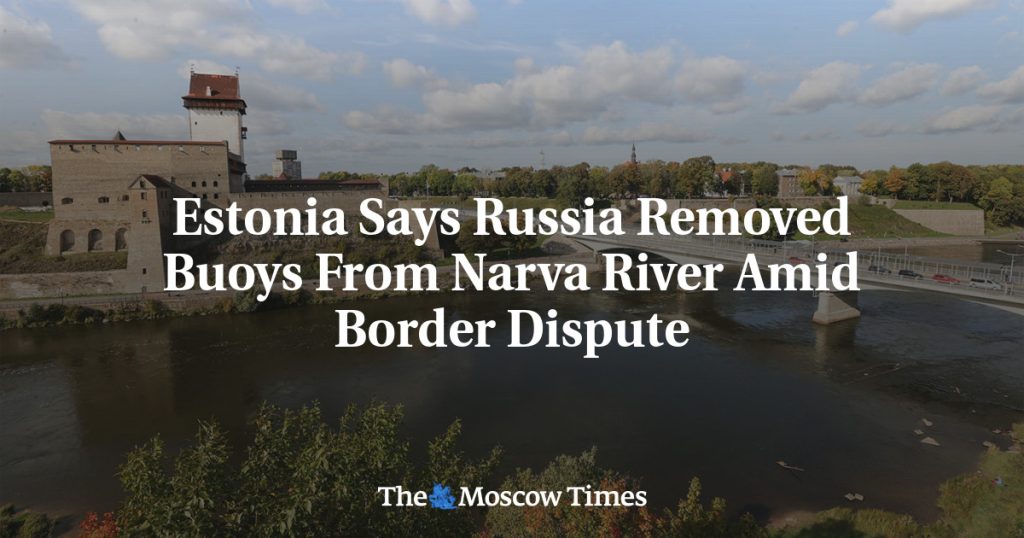Estonia and Russia are currently in a dispute over the placement of buoys in the Narva River, which serves as a border between the two countries. The disagreement, which has escalated since the invasion of Ukraine, revolves around the floating markers used to prevent boats from accidentally entering foreign waters. The Estonian border guard service stated that Russia contested the placement of about half of the planned buoys this year. In response, the Russian border guards were found to be removing the buoys early Thursday morning, leading to tensions between the two neighboring countries.
Estonian Prime Minister Kaja Kallas expressed concerns about the incident, stating that Russia’s actions were meant to create fear and anxiety and sow insecurity in societies. She emphasized that there was a broader pattern of such behavior from Russia. This latest development occurred just days after the Russian government introduced a draft resolution that aimed to redefine the country’s maritime borders around Kaliningrad and the Gulf of Finland. Although the resolution has been removed from the government’s website, it sparked outrage among Russia’s Baltic Sea neighbors, who viewed it as an attempt to destabilize regional security.
The draft resolution proposed changes to Russia’s maritime borders, which experts believe could be used to pressure the country’s Baltic Sea neighbors, all of which are EU and NATO members. While the Kremlin stated that the resolution was not politically motivated, the timing and content of the proposal raised suspicions among neighboring countries. The situation has heightened tensions in the region and raised concerns about Russia’s intentions regarding its border disputes with countries in the Baltic Sea.
The removal of buoys from the Narva River by Russian border guards is not an isolated incident but part of a series of actions that have increased tensions between Estonia and Russia. The latest incident reflects a broader pattern of behavior from Moscow, which seeks to assert its influence in the region and create uncertainty among neighboring countries. Estonia’s response to the buoy removal and the draft resolution introduced by Russia demonstrate the ongoing challenges faced by countries in the Baltic Sea, which are navigating complex geopolitical dynamics amid Russia’s assertive actions.
The ongoing dispute between Estonia and Russia highlights the fragile nature of border security in the region and the need for diplomatic resolutions to prevent further escalation. The removal of buoys and the proposed changes to maritime borders underscore the importance of upholding international norms and agreements to maintain peace and stability in the Baltic Sea. It remains to be seen how the situation will unfold and whether diplomatic efforts will be successful in resolving the border disputes between Estonia and Russia.
In conclusion, the border dispute between Estonia and Russia over the placement of buoys in the Narva River reflects broader geopolitical tensions in the region. The incident has raised concerns about Russia’s intentions and its impact on regional security. The proposed changes to maritime borders and the removal of buoys by Russian border guards have heightened tensions between the two neighboring countries and highlighted the challenges faced by Baltic Sea nations. Diplomatic efforts will be key in resolving the dispute and preventing further escalation in the region.


